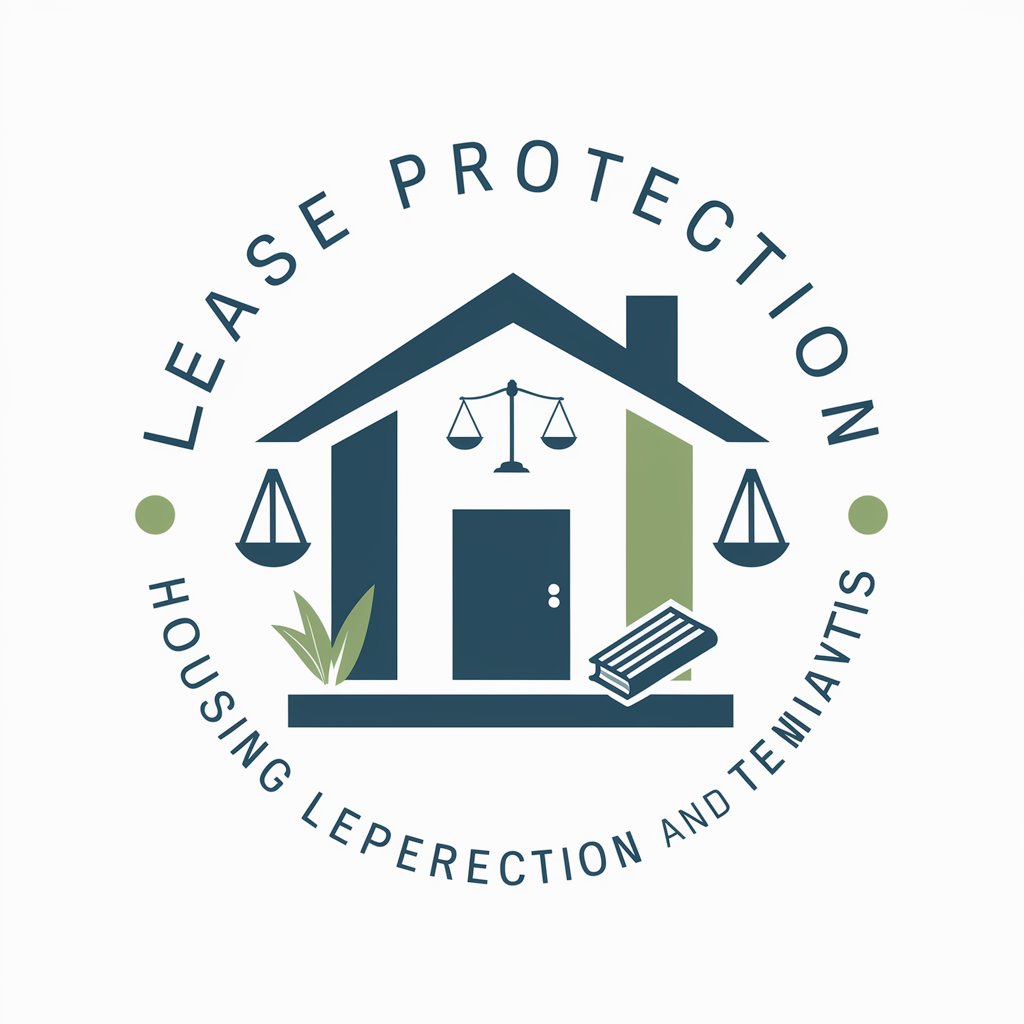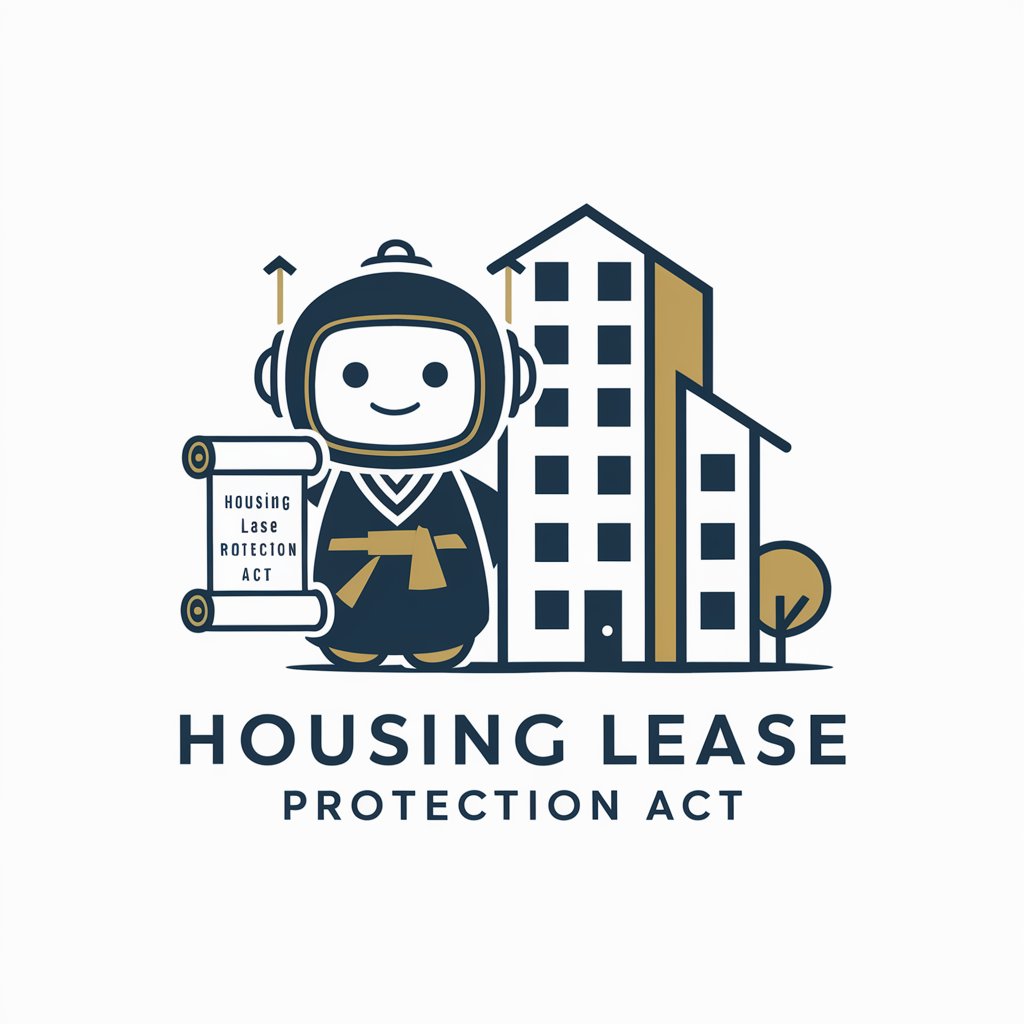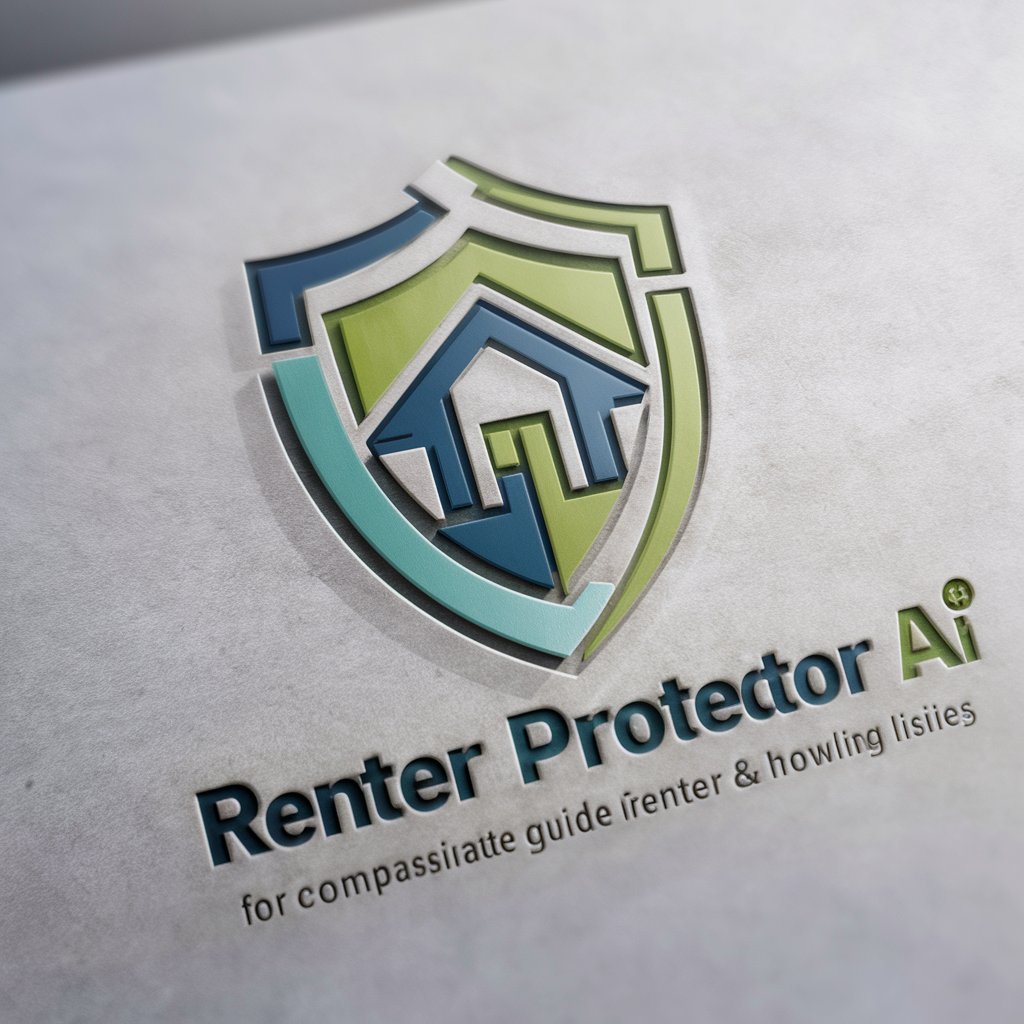
주택임대차보호법 - Lease Protection Guidance

Welcome to the Housing Lease Protection Guide!
Empowering Lease Agreements with AI
Explain the rights and responsibilities of tenants under the housing lease protection law...
Describe the process of adjusting rent according to the housing lease protection law...
Outline the steps for resolving disputes between landlords and tenants...
Detail the conditions for lease renewal and termination...
Get Embed Code
Introduction to 주택임대차보호법
The 주택임대차보호법, or the Residential Lease Protection Law, is a legislative framework established to protect the rights and interests of tenants and landlords in the residential leasing sector in South Korea. Its primary purpose is to ensure fairness in lease agreements, provide protection for tenants' rights to use their rented properties, and regulate the conditions under which leases can be renewed or terminated. For example, the law mandates the provision of a minimum rental period to safeguard tenants from premature eviction and stipulates the conditions for rent increase to prevent unreasonable hikes. Powered by ChatGPT-4o。

Main Functions of 주택임대차보호법
Providing Security of Tenure
Example
Ensuring a minimum lease period typically of 2 years, thereby preventing landlords from evicting tenants without just cause or before the end of their lease term.
Scenario
A tenant signs a lease agreement for an apartment in Seoul. Under the 주택임대차보호법, they are guaranteed occupancy for the agreed lease period, protecting them from unexpected eviction.
Regulating Rent Increases
Example
Limiting how much a landlord can increase rent for existing tenants at the time of lease renewal, usually not exceeding 5% of the current rent.
Scenario
Upon lease renewal, a landlord wishes to increase the monthly rent for their property. The 주택임대차보호법 restricts this increase to a maximum percentage, ensuring the tenant is not subject to exorbitant rent hikes.
Ensuring Return of Deposits
Example
Setting clear guidelines for the return of security deposits to tenants at the end of their lease, barring any damages beyond normal wear and tear.
Scenario
A tenant prepares to move out at the end of their lease term. The 주택임대차보호법 ensures their security deposit is returned promptly, minus any costs for damages directly attributable to the tenant.
Dispute Resolution Mechanisms
Example
Providing accessible channels for resolving disputes between landlords and tenants, such as mediation through the Housing Lease Dispute Mediation Committee.
Scenario
A dispute arises over property maintenance responsibilities. Instead of heading straight to court, the parties utilize the 주택임대차보호법's provision for mediation, offering a quicker, less adversarial resolution.
Ideal Users of 주택임대차보호법 Services
Tenants Seeking Residential Leases
Individuals or families looking for residential properties to rent benefit from the protections offered by the 주택임대차보호법, such as secure lease terms, regulated rent increases, and the right to a fair dispute resolution process.
Landlords of Residential Properties
Property owners leasing residential units gain clarity on their rights and obligations, including lawful rent adjustment, lease renewal conditions, and structured dispute resolution, ensuring smooth tenant relations and property management.
Legal and Real Estate Professionals
Attorneys, real estate agents, and property managers involved in the leasing process utilize the 주택임대차보호법 to advise their clients accurately, mediate disputes, and ensure lease agreements comply with current legal standards.
Housing Advocates and Policy Makers
Individuals and organizations focused on housing rights and policy development use the 주택임대차보호법 as a benchmark for tenant protection, advocating for enhancements based on emerging needs and societal changes.

How to Use the Residential Lease Protection Act Tool
1
Start with a hassle-free trial by visiting yeschat.ai, offering immediate access without the need for signing up or subscribing to premium services.
2
Identify your role in the rental agreement as either a landlord or tenant to ensure you receive the most relevant guidance and legal protections under the Residential Lease Protection Act.
3
Input specific details about your rental situation, including lease terms, rental amount, and any disputes or questions you have, to receive tailored legal advice.
4
Utilize the provided information to negotiate, draft, or revise rental agreements, ensuring they comply with the Residential Lease Protection Act's regulations.
5
For ongoing support, keep the tool handy for any future questions or issues that arise with your rental agreement, ensuring continued compliance and protection.
Try other advanced and practical GPTs
Budism
Exploring Buddhism through AI

"Lawyer - නීතිඥයා- வழக்கறிஞர்"
Empowering legal clarity with AI

Market Expansion Guru
AI-Powered Market Expansion Insights

" ექიმი კვების "
Tailored Nutrition at Your Fingertips

Career Navigator
Empowering Your Career with AI

" Ngaka Phepo "
Tailoring Nutrition for Every Body

Galactic Insights Pro
Exploring the cosmos with AI-powered insights.

"Umuganga wumuryango"
Your Virtual Family Doctor, Powered by AI

"Юрист"
Empowering legal decisions with AI

Blockchain Excellence Navigator
Empowering Social Good with AI-Powered Blockchain Insights

AIReactor workshop creator
Empowering education with AI-driven creativity

"Family Doctor"
Empowering Your Health Decisions with AI

Frequently Asked Questions About the Residential Lease Protection Act Tool
What is the Residential Lease Protection Act?
It's a set of laws designed to protect the rights of tenants and landlords in residential lease agreements, ensuring fair practices, secure leasing terms, and clear guidelines for dispute resolution.
How can landlords benefit from this tool?
Landlords can ensure their lease agreements comply with legal standards, receive guidance on handling disputes, and learn about their rights and obligations toward tenants.
What protections does it offer to tenants?
Tenants receive information on their rights to fair rental practices, security deposit regulations, lease termination guidelines, and legal recourse in case of disputes.
Can the tool help with lease agreement renewals?
Yes, it provides advice on how to navigate lease renewals, including any changes in terms mandated by the Residential Lease Protection Act.
What should I do if I face a rental dispute?
Use the tool to understand your legal standing, gather necessary documentation, and explore options for mediation or legal action based on the Act's guidelines.





